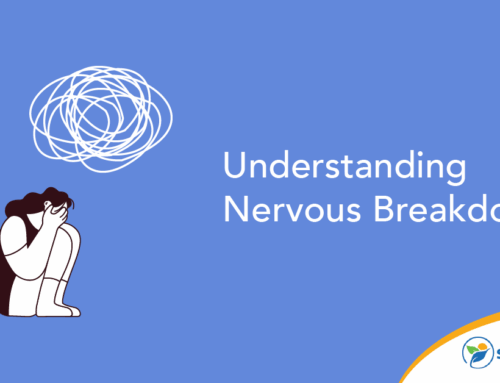The story of Ted Kaczynski, better known today as the Unabomber, is a harrowing example of a once-brilliant mind drawn down dark and destructive paths over a span of years. It’s a story about how social isolation can shape and reinforce antisocial worldviews and contribute to the violence that comes with them. And it’s a story that raises questions about whether psychological evaluations — in the case of Ted Kaczynski, a diagnosis of paranoid schizophrenia — can be a genuinely useful tool in the context of the justice system.
Early Life and Academic Brilliance
Kaczynski was a prodigy from an early age, attending Harvard on a scholarship at the age of 16. He’d seen hardship in his early life, including an allergic reaction to medication as a child that hospitalized him for a period that reportedly led to a noticeable shift in his personality. At Harvard, he was subjected to a controversial behavioral experiment that involved extensive verbal abuse of the kind used by interrogators to break down suspects.
Both incidents have been cited as possibly being connected with developments in his later life, but it’s important to be clear that there was no straightforward line of causation. Kaczynski continued to be a promising academic talent after Harvard, going on to a graduate program at the University of Michigan, teaching classes and working on a dissertation that drew considerable praise. The first real signs of trouble emerged when he went to the University of Berkeley, where he had trouble keeping up with his lecture schedule and began to avoid contact with the rest of the student body.
Social Isolation and Radicalization
Kaczynski quit his involvement with Berkeley in 1969 without warning, and by the early ’70s, he’d made a break with his former life. He resettled in a remote cabin in Montana on a plot of land owned jointly with his brother, and there he pursued a survivalist lifestyle and devoted his attentions to reading and the early drafts of his personal anti-technology philosophy. He made a brief excursion from the cabin to attempt a return to Chicago in 1978, but a failed relationship with a female supervisor brought that chapter to an ignominious close, and he returned to isolation.
The Unabomber Manifesto
The Unabomber Manifesto — a 35,000-word document whose given title was Industrial Society and Its Future — was published in 1995, laying out Kaczynski’s survivalist philosophy. Its writing had begun much earlier: A handwritten early draft of his ideas in 1971 laid out the belief that industrial progress was the enemy of individual liberty and would have to be stopped with direct action.
Kaczynski’s belief in that ideology was a key motivation for his crimes as the shadowy Unabomber. The ideas eventually brought together in the manifesto were not particular to Kaczyinski. He synthesized them from the ideas of several prior tech-skeptical academics into his own brand of anti-tech radicalism that distinguished itself by its explicit call for direct action.
Bombings and Unleashing Terror
The Unabomber moniker came from the fact that Kaczynski’s idea of direct action to support his anti-tech radical views took the form of a lengthy mail bombing campaign over the course of 17 years. The prelude to that campaign saw his estrangement from his family and the development of a general, visceral hatred for the modern system that led to attempts to sabotage motorcycles and snowmobiles that passed within his reach.
The bombs began to appear in 1978, their targets seemingly indiscriminate and the bomber’s tracks carefully erased. By the end of 1985, the Unabomber’s devices had grown lethal, with the owner of a computer rental store slain in December of that year. All in all, he would send out 15 bombs, injuring 23 victims and killing three before a drive to seek publicity for his ideas led to his capture.
Psychological Evaluation and Legal Proceedings
Prior to standing trial, the Unabomber underwent a court-ordered psychological evaluation. The primary evaluation, conducted by Dr. Sally Johnson, suggested a diagnosis of paranoid schizophrenia (the prosecution’s doctors suggested schizoid personality disorder instead), due to his delusional beliefs about persecution by modern technology and the abuse of his own parents.
That diagnosis had the potential to affect whether he could even stand trial or be held criminally responsible for his actions. Some legal experts tend to be concerned about whether this kind of evaluation can be used to effectively neutralize criminal prosecutions.
Indeed, a debate arose around Ted Kaczynski as to whether his mental illness should be a mitigating factor in his crimes or whether the question of his evil was separate. One of his victims, a geneticist who lost several fingers to one of his bombs, came out in the latter camp. Even if Mr. Kaczynski suffers from mental illness, the 64-year-old Dr. Epstein said, ”[that] doesn’t take away for me the fact that he is evil … There are many psychotic people in this world that don’t spend their time in a cabin plotting to kill people.”
Ultimately, Ted Kaczynski’s diagnosis didn’t keep him from being found competent to stand trial and be held accountable for his actions. His psychological evaluation explained what shaped his crimes but didn’t ultimately explain his choice to go through with them. As forensic psychiatrist Dr. Stephen Diamond put it in a reevaluation of the Unabomber case on the 10th anniversary of Kaczynski’s capture, there was no either-or choice between Kaczynski’s mental illness and his criminal culpability. He said, “Terrorism is itself a form of madness. Perpetrators of terrorism express their rage at the world destructively, in a desperate, last-ditch and sometimes suicidal attempt to gain recognition, fame or glory for themselves and their cause.”
On the whole, the legacy of the Unabomber is not his specific mental health diagnosis but rather the larger madness of the terrorism he chose to be a vehicle of.






